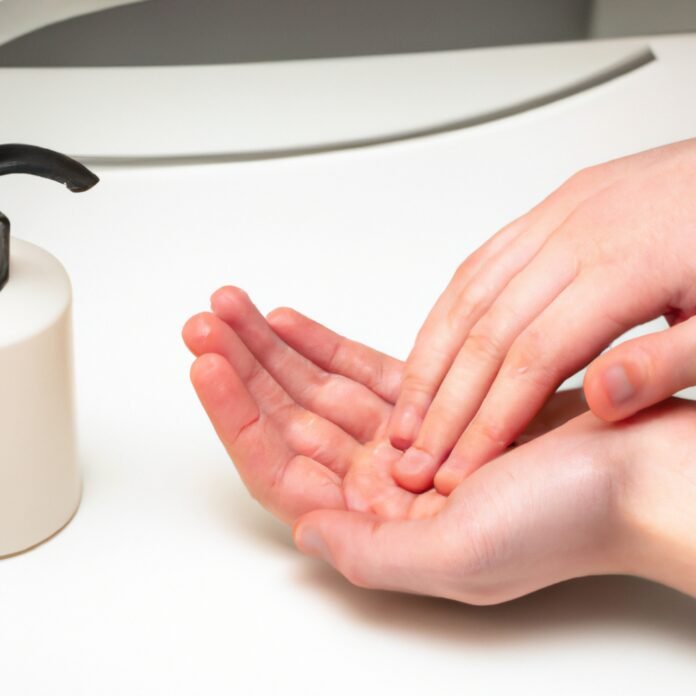From shaking hands to coughing and sneezing, germs have countless ways of traversing our bodies and infecting us with disease. Proper hand hygiene is essential to reducing the spread of germs and preventing individuals – and entire populations – from succumbing to sickness or injury. Today, we’re here to discuss the importance of proper hand hygiene for disease prevention.
1. Keeping Hands Clean To Combat Disease
Regular handwashing with soap and water is one of the best ways to prevent the spread of infection. It removes dirt, germs, and viruses from the hands and can reduce the chances of getting sick. Handwashing should be done thoroughly and frequently, and especially after being exposed to — or coming into contact with — materials that may carry germs.
Simple steps, even if done multiple times during the day, can make a big difference in reducing the risk of illness for yourself and those around you.
- Wash your hands for at least 20 seconds with soap and running water.
- Avoid touching your eyes, nose, and mouth as much as possible.
- Don’t share items such as towels, forks, and water bottles.
- Clean and disinfect high-touch areas in your home regularly.
Following the simple steps above and washing your hands often can greatly reduce your risk of catching or spreading a contagious disease. It may not seem like much, but proper hand hygiene significantly prevents the spread of many common illnesses such as the flu, colds, and even diarrhoea.
In addition, it is also important to not rely solely on handwashing to protect yourself from disease. If your hands come in contact with a surface that might be contaminated, such as a doorknob or countertop, consider cleaning it with alcohol or soap and water. Using a sanitizer with at least 60% alcohol can also be beneficial. Furthermore, you should avoid close contact with people, particularly those with symptoms of a communicable illness.
2. The Vital Role of Hand Hygiene in Disease Prevention
Adequate hand hygiene is an effective way to prevent the spread of disease and safeguard your own health. It is an essential element of reducing transmittable illness, and is also the one of the key ways we can all take control of our own health and the wellbeing of those around us.
Through proper hand hygiene, you can reduce the risk of contracting and spreading infections, bacteria and germs. Not only does it protect you and those around you, it also helps to prevent other conditions, such as healthcare-associated infections amongst hospital patients and in that sense an important indicator of quality care.
The most important steps to practice good hand hygiene include:
- Washing your hands with soap and water. This is the best way to reduce germs on your hands, and it should be done at least 20 seconds.
- Drying your hands. Make sure to dry them completely before touching anything.
- Using alcohol-based hand sanitizer. If soap and water are not available, use a sanitizer with at least 75% alcohol content.
By making sure your hands are clean and free from germs, you can help protect yourself and others. It is worth remembering that hand hygiene is only part of the equation. To reduce the spread of diseases, it’s important to also practice other measures, such as wearing a face covering, avoiding large gatherings and gatherings with people outside of your household, and social distancing.
3. The Need for Sustainable Hand Hygiene Habits
Hand hygiene is one of the most critical steps we can take to protect ourselves and our community from the spread of illness and disease. As we navigate our new normal, it is important now more than ever to not only remember proper hand hygiene practices but to also make them a habit.
Covid-19 has proven that sourcing new personal protective equipment (PPE) supplies and sanitizers can be challenging when supplies are in short supply. Therefore, sustainable practices and habits need to be established that will help promote and encourage long-term hand hygiene stewardship.
A good way to achieve this is to recognize the four key moments of hand hygiene. These include:
- Before touching a patient’s face, mouth, nose, and other body parts
- Before touching a patient´s medical device, instrument or material
- After contact with a patient’s body fluids
- After contact with a patient’s skin
These simple principles should be instilled in our daily routine through regular reminders or posts around our environment to build the individual’s awareness. Additionally, placing handwashing equipment in visible locations, such as signboards, can encourage people to stop and check for handwashing instructions. Furthermore, providing people with appropriate hand care lotions can help protect the skin from potential dryness caused by frequent hand washing.
4. Educating the Public on Proper Handwashing Technique
Proper handwashing is one of the most effective and easiest ways to fight the spread of disease – but it is not always practiced correctly. To reduce the spread of germs, it is essential to educate the public on the correct handwashing technique.
Choose the right soap and water temperature: To wash your hands correctly, use hot water and soap, and rub your hands together for at least 20 seconds. Use a mild soap – avoid highly perfumed bar soaps – to prevent skin irritation.
Pay attention to detail: Washing your hands well requires being thorough. Start at the wrist and lather the soap all the way up to your fingertips and in between your fingers. Don’t forget to scrub the back of your hands and your fingernails. Thoroughly rinse your hands with running water.
Dry your hands correctly: Dry your hands thoroughly with a clean towel or air dryer. Germs can thrive in moist environments, so make sure your hands are completely dry before touching anything. Here’s a checklist of proper handwashing steps:
- Use running water and lather soap in your hands.
- Scrub and lather for at least 20 seconds.
- Clean all areas, including wrists, palms, between fingers, back of hands and fingernails.
- Rinse with running water.
- Dry hands with a clean towel or air dryer.
By , we can help reduce the spread of disease and keep everyone healthier and safer.
5. How Hand Hygiene Can Protect Us From Illness
Proper hand hygiene is a simple and effective way of protecting our bodies from catching illnesses. It involves following a few simple steps and can help us stay healthy and stay well.
- Clean regularly: Wash your hands often with soap and water for at least 20 seconds. This is especially important after using the toilet, before and after preparing food, and before and after eating.
- Use hand sanitizer: Use an alcohol-based hand sanitizer when soap and water are not available.
- Be careful with surfaces: Make sure you disinfect high-touch areas like countertops, doorknobs, and light switches.
Practising proper hand hygiene is vital for preventing many illnesses. It can help prevent the spread of food-borne illnesses, prevent respiratory infections like colds and flu, and can help reduce the spread of contagious illnesses like norovirus.
Good hand hygiene also helps to reduce antibiotic resistance, as it helps to prevent the spread of infections that require antibiotics to treat. And when done regularly, it helps to keep our hands clean and bacteria-free.
We hope this article has inspired you to practice good hand hygiene and preventive care habits to protect both yourself and those around you. The importance of clean hands is often overlooked, so now that you know, make sure you make it a priority!


